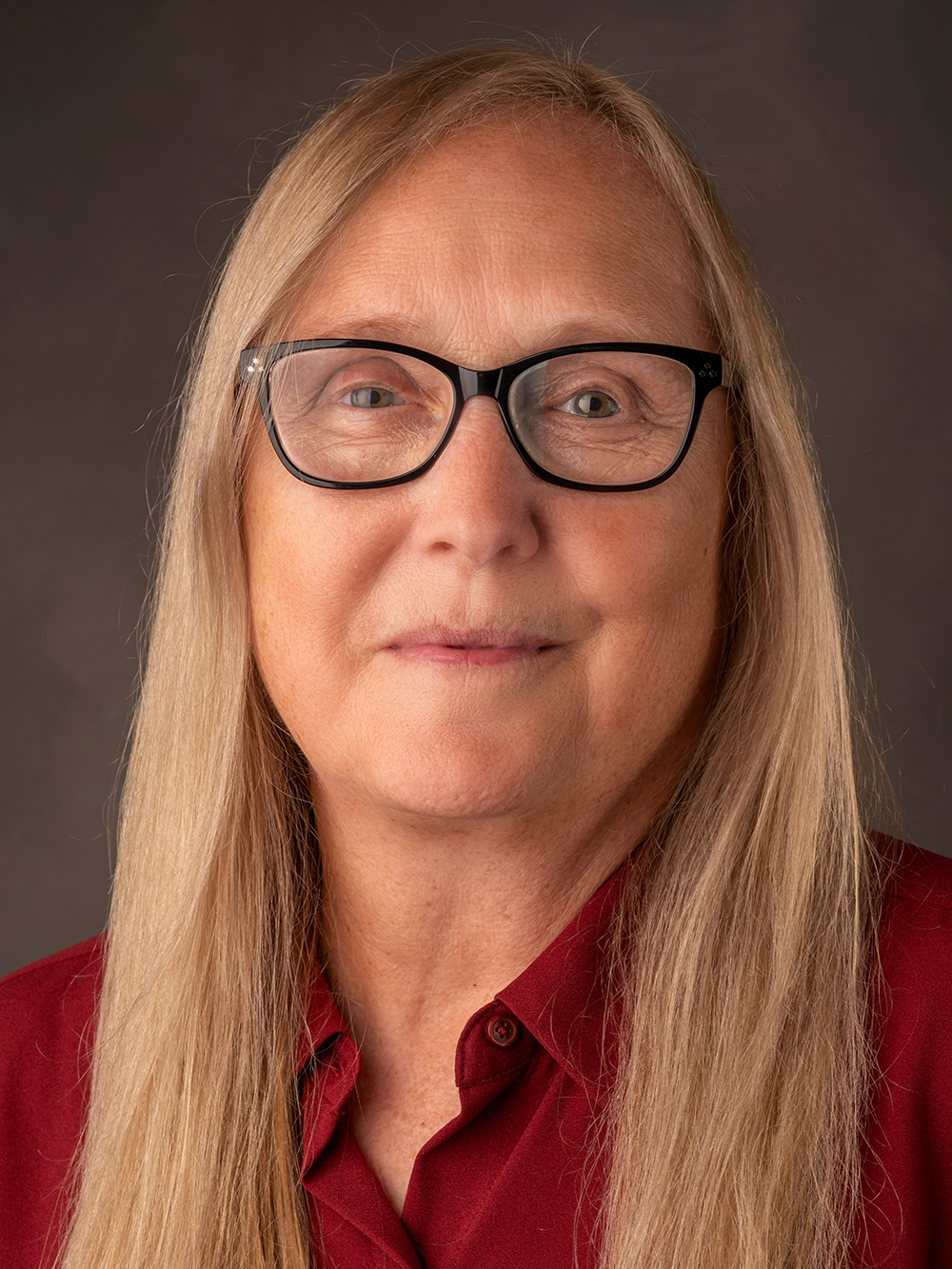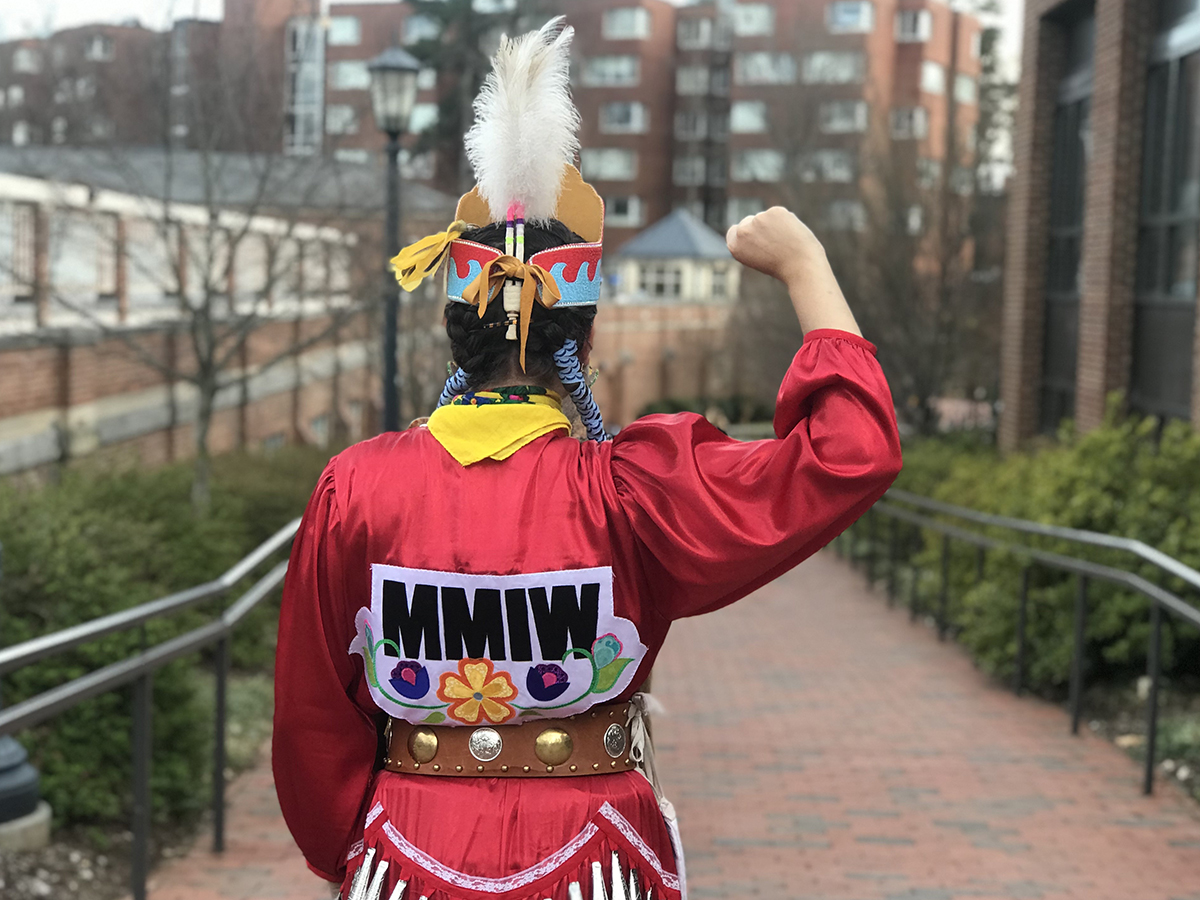This column from Lorraine Ahearn, assistant professor of journalism, was published by the Greensboro News & Record on Nov. 22.
by Lorraine Ahearn
The jingle dress she wears, fitted with row after row of small metal cones, makes a shimmering sound when Raven Dial-Stanley bounces lightly on her feet to the beat of a Native American drum.

The young Lumbee pow-wow dancer is performing an Ojibwe prayer dance that originated a century ago, likely during the 1918 Spanish flu pandemic, when it appeared in a dream to a medicine man whose granddaughter was dying.
Dial-Stanley’s version of the garment has fewer rows of metal cones than the original, so that the dress won’t be too heavy. But as she kicks her heels and turns, a contemporary sign of the times appears that carries a weight of its own.
It’s an “MMIW” emblem, signifying missing and murdered Indigenous women, an under-reported plague that has gripped tribes from Canada to the western U.S. to both urban and rural Indian communities here in the east. Some counties in the U.S. have murder rates among Native women that are double the national average. But their unsolved cases rarely receive widespread coverage that keeps them before the public, in contrast to the case of Gabby Petito, the travel YouTuber whose disappearance and death made national news in fall 2021.
“That made headlines for months, and it was a great tragedy. But in Indian Country, it’s a monthly and in some cases, a weekly thing,” Jennifer Revels Baxter, president of Guilford Native American Association, was saying.
“People look at our communities and think, ‘Who’s going to miss them?’ Scholars refer to us as the ‘invisible people.’ That, to me, is the real issue. If we’re not on your news in the evening, you’re not going to know about us.”
That lack of coverage was in spite of what the Bureau of Indian Affairs termed a “staggering” rate of violence against Native women. The National Crime Information Center reported 5,712 missing American Indian and Alaska Native women and girls, and identified murder as the third leading cause of death for Native women.

Revels Baxter said a lack of accurate representation in media — and in the national conversation — is partly a function of small numbers. The Lumbee are the seventh largest tribe in the U.S., and the largest east of the Mississippi with about 55,000 members. But place that next to more than 2 million African Americans in North Carolina, and almost a million Hispanics in the state, and the Lumbee are a minority’s minority.
For educators like Revels Baxter and Dial-Stanley, November is a busy month. And though they welcome invitations like one at Elon University to talk about Indigenous People’s Month, the occasion is still a date on the calendar, still tethered to the Photoshopped version of American history that grew up around Thanksgiving.
The reality — millions of Indigenous people slaughtered, starved, or wiped out by European-borne diseases post-1492 contact — casts a long shadow over the present. Observers like Revels Baxter note that even as memory of the American West casts Indians as “something belonging to the past,” the fact is that Indigenous people never left. This was in spite of a century of Indian boarding schools with their “Kill the Indian, save the man” philosophy of assimilation, policies of forced removal, loss of land, food insecurity, and the bottomless social indicators of reservations: low life expectancy, high rates of poverty and disease.
All this has brought a belated reckoning with history, and there are some signals of change. The current Congress is moving toward seating a non-voting Cherokee delegate from Oklahoma, a provision that was promised in an 1835 federal treaty but never delivered; elsewhere, Alaska this year elected a Native woman to represent its only congressional district.
Meanwhile, U.S. Secretary of the Interior Deb Haaland, the first Native American cabinet member, this year created an Indian Youth Service Corps to give this generation a role in public and tribal land conservation efforts. In the U.S. and Canada, there is a growing recognition in the research sector that Indigenous knowledge and stewardship are untapped resources in addressing the impact of climate change in North America.
That longer view of time, the notion that what is old is new, is reflected in the round dance that Raven Dial-Stanley demonstrated this fall at Elon. Inviting her guests to join hands, she led a line that snaked in and out, clockwise and counterclockwise, in which the dancers continually crossed paths to face each other again. In the end, they rushed together toward the middle, hands still joined, and cried out in one voice.
——
Views expressed in this column are the authors’ own and not necessarily those of Elon University.


